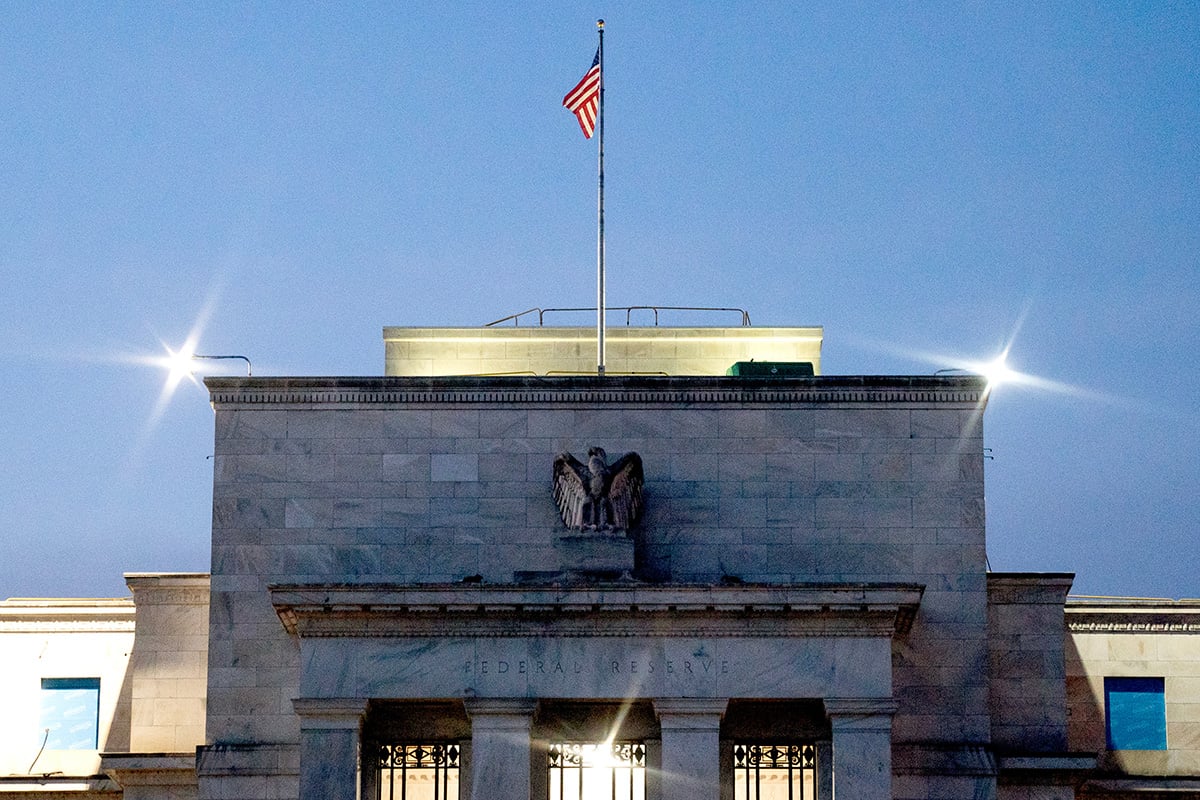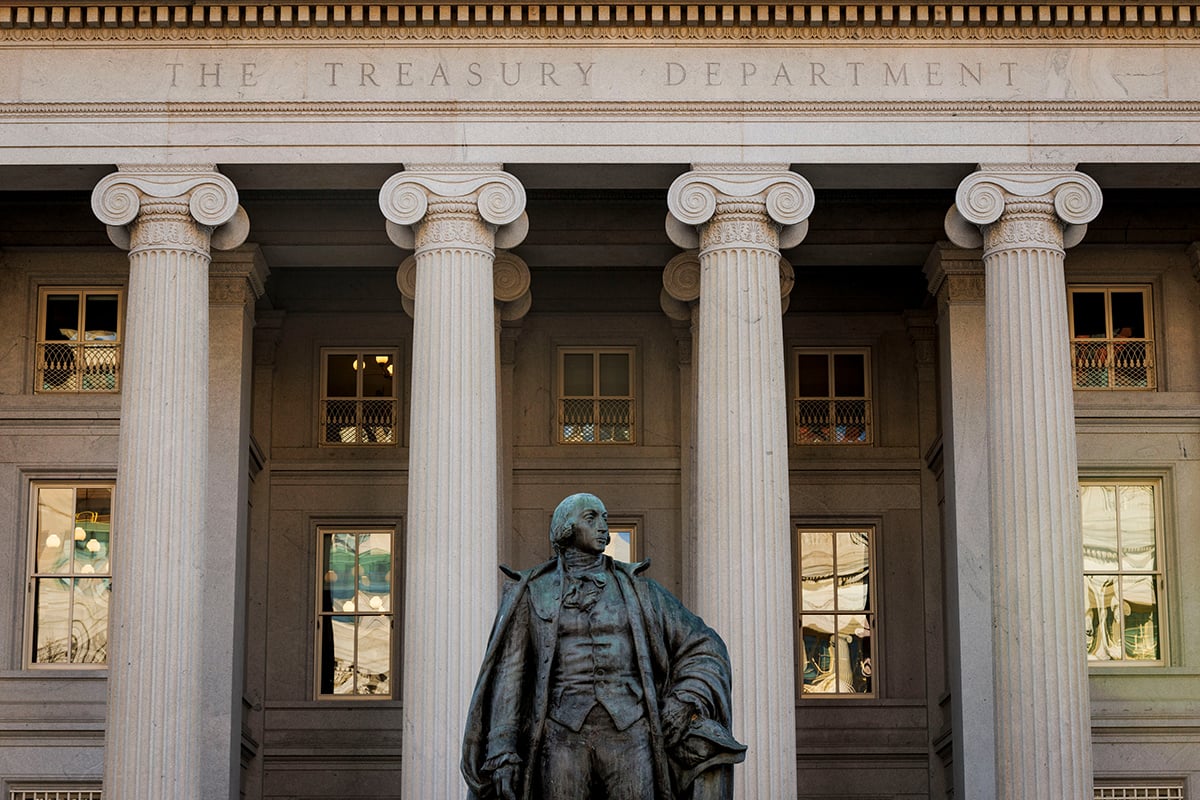High-risk companies that tapped the $1.4 trillion U.S. leveraged loan market have been largely insulated from rising short-term rates. Now they're about to feel the pain.
A key lending benchmark, the three-month U.S. dollar London interbank offered rate (LIBOR), topped 1 percent on Tuesday, the highest since April 2020. That's above the minimum level many junk-rated borrowers agreed to pay when calculating interest payments on their loans. Until recently, an increase in rates might not have had much real impact on these corporations, but now this expense will likely rise over time for most borrowers.

Recommended For You
Increases in these costs could push the weakest loan borrowers to the point where their businesses aren't generating enough cash to cover all their expenses, known as negative free cash flow, said Steve Hasnain, who invests in leveraged loans at Pinebridge Investments. Many of these companies are already facing pressure from surging commodity and labor costs, he said.
"It seems like the perfect storm," Hasnain said. "The borrowers that were not generating a lot of free cash flow to begin with may actually go free cash flow negative in the near term."
These companies usually have credit ratings in the CCC tier, the lowest typically seen in loans. That ratings level, plus the levels below it, account for a little more than 5 percent of the roughly $1.4 trillion market, or about $72 billion worth, according to S&P Leveraged Commentary & Data based on the S&P/LSTA Leveraged Loan Index.
These CCC-rated companies have been generating just enough earnings to cover their interest expense, said Neha Khoda, head of loan strategy at Bank of America Corp. A growing economy may translate to higher earnings for these companies, covering some extra costs from rising interest rates, according to Khoda.
"But in a stagflationary environment, the CCC issuers will be most at risk, and maybe to an extent B3 rated issuers as well," Khoda said.
Switching LIBORs
Companies have a trick to avoid bearing the full brunt of rising rates: switching from three-month LIBOR to one-month, which was 0.46 percent on Tuesday.
But even so, many companies will probably still have to pay higher rates in the coming months. About 24 percent of outstanding leveraged loans tied to LIBOR have contractual minimum rates of 0.5 percent for the benchmark. Another 18 percent of loans have floors of 0.75 percent, according to Barclays Plc. And around 12 percent have floors of 1 percent, while about 45 percent have floors of 0 percent. Corporations pay additional interest on top of the benchmark, known as a margin.
For most companies in the leveraged loan market, rising rates won't be catastrophic. Overall, companies in the space that are publicly listed are generating about four times as much earnings as their interest expense, based on EBITDA (earnings before interest, taxes, depreciation, and amortization), BofA's Khoda said. If the Fed increases short-term rates by another 2.75 percentage points, after starting hiking rates earlier this month, that ratio will still be about three times on average, still a reasonable level, she said.
The Federal Reserve has signaled six more hikes this year, and that could mean a rapid increase in short term rates including LIBOR and the newer Secured Overnight Financing Rate (SOFR). Most leveraged loan payments are structured as a margin above those rates.
The market is in the middle of a transition away from LIBOR. The discredited benchmark could no longer be used in new deals starting in 2022, and most new loans have been issued with SOFR so far this year. About 85 percent of loans tied to the new benchmark have floors of 0.5 percentage points, with three-month term SOFR now at 0.65 percent and one-month term SOFR standing at about 0.31 percent. But the bulk of existing loans still use LIBOR, which is due to be officially retired mid-2023.
Tail Risk
Many businesses have used the extra-easy money environment of the past two years to refinance debt at lower rates and push out maturities, said Jeff Darfus, a credit research analyst at Barclays Plc. Plus, the most stressed borrowers defaulted in 2020, and the stronger companies survived, leaving the market on relatively good footing.
"Generally, these companies will be able to handle the beginning of these increases in interest expense and then that obviously just comes down to what's happening with growth," he said.
But the overall improvement in corporate credit fundamentals is not mirrored in lower-rated leveraged loans, according to a recent report by UBS Group AG strategists led by Matthew Mish. "The key risk is rising funding costs and slowing growth could reinvigorate CCC downgrade fears," they wrote.
The Fed's efforts to clamp down on inflation mean that rates are rising faster than in previous cycles. By the end of 2022, JPMorgan Chase & Co forecasts that three-month LIBOR will be around 2.25 percent, and one-month trailing average SOFR will stand at roughly 1.65 percent.
© 2025 ALM Global, LLC, All Rights Reserved. Request academic re-use from www.copyright.com. All other uses, submit a request to [email protected]. For more information visit Asset & Logo Licensing.




